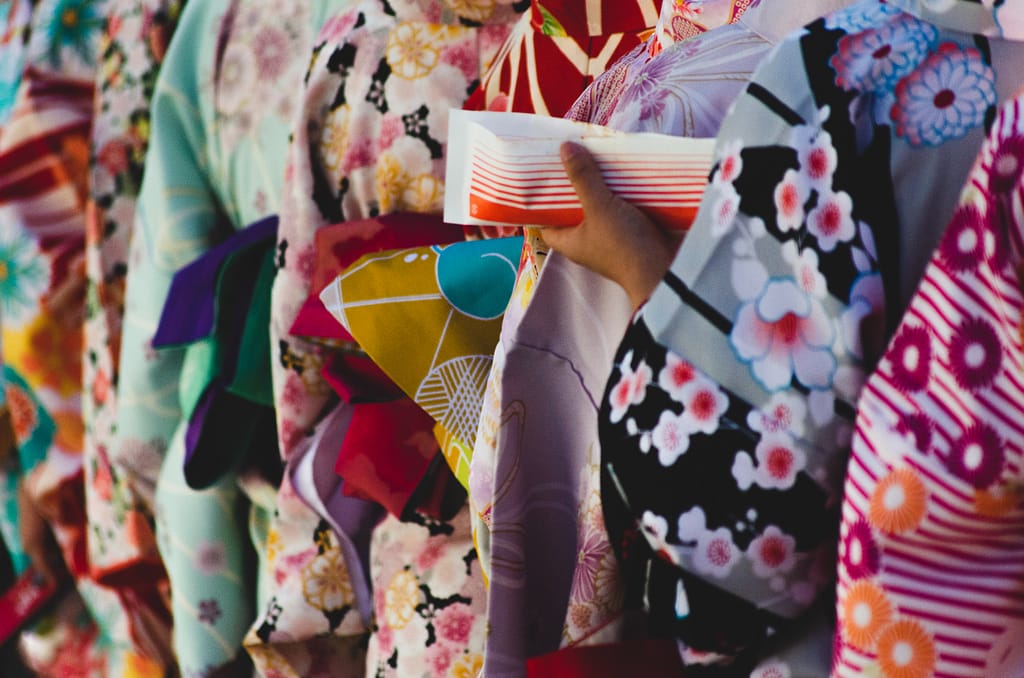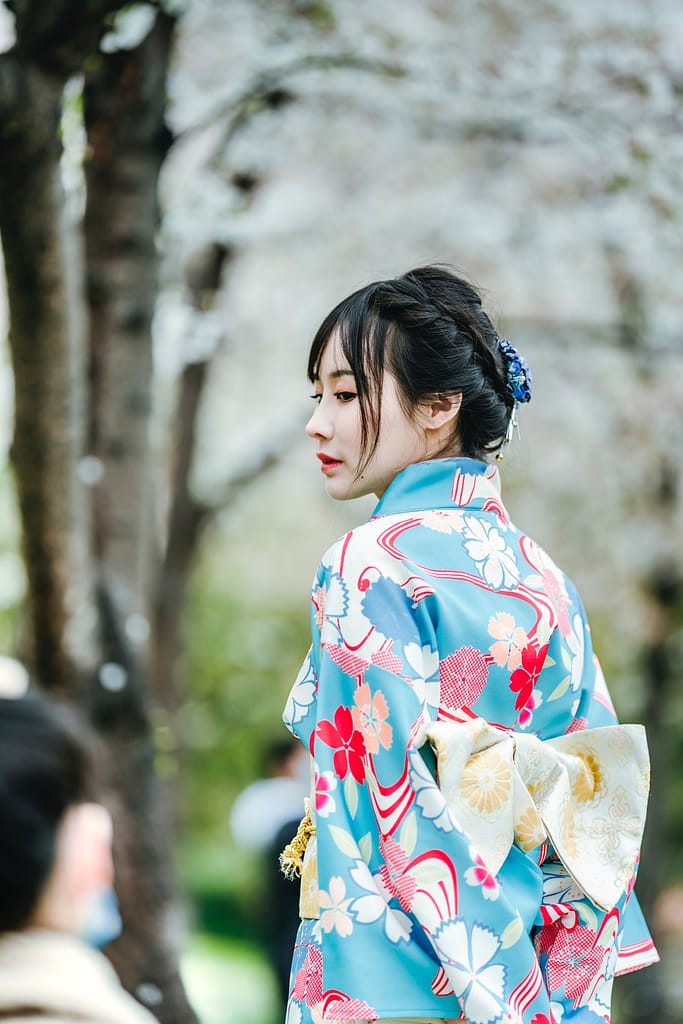Then and Now!
The kimono and happi are two traditional garments that have been an integral part of Japanese culture for centuries. These iconic pieces of clothing have a rich history and continue to be worn and admired today. In this blog post, we will delve into the fascinating facts about kimonos and happis, exploring their origins, evolution, and modern-day significance. From their intricate designs to their cultural symbolism, there is much to discover about these timeless garments. So, let’s take a journey through the history of kimonos and happis and learn more about their enduring appeal.

Tracing the Origins of Kimono and Happi in Japan
The origins of the kimono and happi can be traced back centuries ago in Japan. These traditional garments hold a significant place in Japanese culture and have evolved over time to become the iconic pieces of clothing that they are today.
The kimono, known for its elegant and timeless design, has been worn by the Japanese for over a thousand years. Its roots can be found in the Heian period (794-1185), where it was initially influenced by the Chinese Hanfu. Over time, the kimono evolved to become a symbol of social status and fashion, with different designs and patterns signifying the wearer’s age, gender, and marital status.
On the other hand, the happi, a shorter and looser jacket, has a more utilitarian origin. It was originally worn by firefighters during the Edo period (1603-1868) and featured a distinct cross-shaped crest on the back. The happi was not only functional but also became a way for firefighters to showcase their bravery and unity.
Both the kimono and happi have been passed down through generations and are still worn and appreciated today. Their exquisite craftsmanship, attention to detail, and cultural significance make them important symbols of Japanese heritage. Whether worn for formal occasions, traditional ceremonies, or as a fashion statement, these garments continue to captivate people worldwide with their beauty and history.

Cultural Significance and Evolution of Kimonos
Kimonos hold immense cultural significance in Japan, symbolising tradition, beauty, and elegance. Over the years, kimonos have evolved and adapted to reflect changes in society whilst still maintaining their traditional charm. In ancient Japan, kimonos were worn by people of all social classes, but the design and quality of the garment indicated one’s status. The layers and intricate patterns showcased the wearer’s wealth and sophistication.
During the Meiji era (1868-1912), Western influences began to infiltrate Japanese fashion, leading to a decline in the popularity of kimonos. However, in recent years, there has been a resurgence of interest in traditional Japanese culture, leading to a renewed appreciation for kimonos. Today, kimonos are not only worn for special occasions and ceremonies but also as fashionable attire.
The evolution of kimonos is not just limited to their design; it also extends to their materials. Originally made from silk, kimonos now incorporate a variety of fabrics such as cotton and synthetic materials. This evolution has made kimonos more accessible and versatile, allowing them to be worn in different seasons and settings.
Overall, kimonos have stood the test of time and continue to be an important symbol of Japanese culture. Their cultural significance and evolving fashion appeal make them a unique and cherished garment in the fashion world.

The Story of Happi: From Workwear to Festival Clothing
The happi, a shorter and looser jacket, has an intriguing journey from its origins as workwear to becoming a beloved garment for festivals and celebrations. Originally worn by firefighters during the Edo period in Japan, the happi was designed for practicality and functionality. Its distinct cross-shaped crest on the back not only served as a symbol of unity but also as a way for firefighters to display their bravery.
Over time, the happi transitioned from its practical purpose to becoming a popular choice for festivals and cultural events. The vibrant colours and eye-catching patterns of the happi added to the festive atmosphere, and it became a way for people to express their joy and celebration. The happi’s loose fit and comfortable design made it suitable for dancing and moving freely during these occasions.
Today, the happi continues to be an integral part of Japanese festivals, particularly during summer events like Obon and the Matsuri. It is not only worn by participants but also by festival performers and vendors, creating a lively and vibrant atmosphere. The happi’s evolution from workwear to festival clothing showcases its adaptability and enduring appeal in Japanese culture.

Traditional Designs, Patterns, and Materials of Kimonos and Happis
Kimonos and happis are renowned for their stunning designs, intricate patterns, and use of luxurious materials. Traditional kimonos feature a wide range of designs, each with its own symbolic meaning. Floral motifs, such as cherry blossoms and chrysanthemums, represent beauty and nature, whilst geometric patterns like waves and cranes symbolise longevity and good fortune. The patterns and colours used in kimonos can also vary depending on the occasion and the wearer’s social status.
Materials used in kimonos and happis have evolved over time. In the past, kimonos were primarily made from silk, a fabric associated with elegance and luxury. However, as kimonos became more accessible and versatile, cotton and synthetic materials were introduced, offering a wider range of options for different seasons and occasions.
The design and materials of happis also play a significant role in their traditional aesthetic. Typically, happis are made from durable cotton or hemp fabrics, featuring bold stripes and vibrant colours. These patterns often reflect the symbols and emblems associated with specific festivals or cultural events.
Whether it’s the breathtaking beauty of a silk kimono or the bold and vibrant patterns of a happi, the traditional designs, patterns, and materials of these garments showcase the artistic craftsmanship and attention to detail that make them truly remarkable. These elements continue to be celebrated and cherished, allowing kimonos and happis to remain timeless and iconic symbols of Japanese culture.

Kimonos and Happis in Modern Japanese Society and Fashion
In modern Japanese society, kimonos and happis continue to hold a special place. Whilst these garments were traditionally worn for special occasions and ceremonies, they have now become a part of everyday fashion as well. Kimonos, with their flowing silhouettes and intricate patterns, have captured the hearts of fashion enthusiasts around the world. They can be seen worn by both men and women, as a stylish alternative to Western attire.
In recent years, there has been a growing trend of kimono rental shops in Japan, where people can experience the elegance and grace of wearing a traditional kimono for a day. This has sparked a resurgence of interest in kimonos, not only amongst the Japanese but also among tourists who want to immerse themselves in the country’s rich cultural heritage.
Similarly, happis have also made their way into modern fashion and society. Whilst they were originally designed for practicality, they are now seen as trendy and fashionable pieces. Happis are often worn during festivals and cultural events, adding a vibrant and festive touch to the celebrations.
Overall, kimonos and happis have successfully made the transition from traditional garments to modern fashion statements. They continue to be worn and appreciated, not just in Japan but across the globe, for their beauty, cultural significance, and timeless appeal.

Kimonos and Happis Influence on Global Fashion Trends
Kimonos and happis have had a significant influence on global fashion trends, captivating the hearts of designers, fashion enthusiasts, and consumers around the world. These traditional garments from Japan have made their way onto international runways and into everyday fashion, becoming a symbol of elegance, grace, and cultural appreciation.The unique silhouettes, intricate patterns, and luxurious fabrics of kimonos have inspired countless fashion designers worldwide. From high-end fashion houses to fast-fashion brands, kimonos have been reinterpreted and incorporated into modern collections. Their flowing and relaxed fit offers a refreshing alternative to the structured and tailored garments typically seen in Western fashion.Happis, with their vibrant colours and bold patterns, have also made an impact on global fashion trends. The festive and celebratory nature of happis has caught the attention of designers looking to inject a touch of exuberance into their designs. Happis’ loose and comfortable fit is perfect for the casual and bohemian aesthetic that is so popular today.The influence of kimonos and happis can be seen not only on the runway but also in street style fashion. Fashion-forward individuals have embraced these traditional garments as a way to express their unique style and pay homage to Japanese culture.
How to Wear a Kimono and Happi: An Art in Itself
Wearing a kimono or a happi is not just about putting on a piece of clothing; it’s an art form in itself. These traditional garments require skill, precision, and a deep understanding of their cultural significance. When it comes to wearing a kimono, it’s all about the careful wrapping, tying, and folding of the fabric. The process involves layers upon layers, with each fold and tie holding its own meaning and purpose. It’s a delicate dance between tradition and personal expression.
To begin, you must first start with the undergarments, known as hadajuban, which provide a foundation for the kimono. Then comes the obi, a wide belt that is tied around the waist and secures the kimono in place. The way the obi is tied can vary depending on the occasion and personal style. Next, the kimono itself is carefully wrapped around the body, making sure to achieve the perfect balance of fabric and fit.
The art of wearing a happi is slightly different but equally fascinating. The loose fit and relaxed silhouette make it easy to wear, but there are still certain rules to follow. The happi is typically worn with the sleeves folded back and the garment left open at the front. It can be worn with a belt or without, depending on personal preference.
Whether it’s a kimono or a happi, the art of wearing these garments goes beyond the technicalities. It’s about embracing the culture, history, and traditions they represent. It’s about understanding the significance of each fold, tie, and accessory. When you wear a kimono or a happi, you become a living canvas, telling a story through your attire. So take the time to learn, appreciate, and master the art of wearing these timeless garments, and you’ll truly embody the spirit of Japanese culture.
